ABOUT DORYOKU RYU KARATE
Doryoku Ryu Karate specialises in teaching Traditional Okinawan Goju Ryu Karate. Goju Ryu means Hard/Soft School. We are a Shibu dojo of the Jundokan Dojo in Naha, Okinawa, the dojo which was established by the late Ei'ichi Miyazato (1922-1999), a direct student of Goju Ryu's founder, Chojun Miyagi (1888-1953).
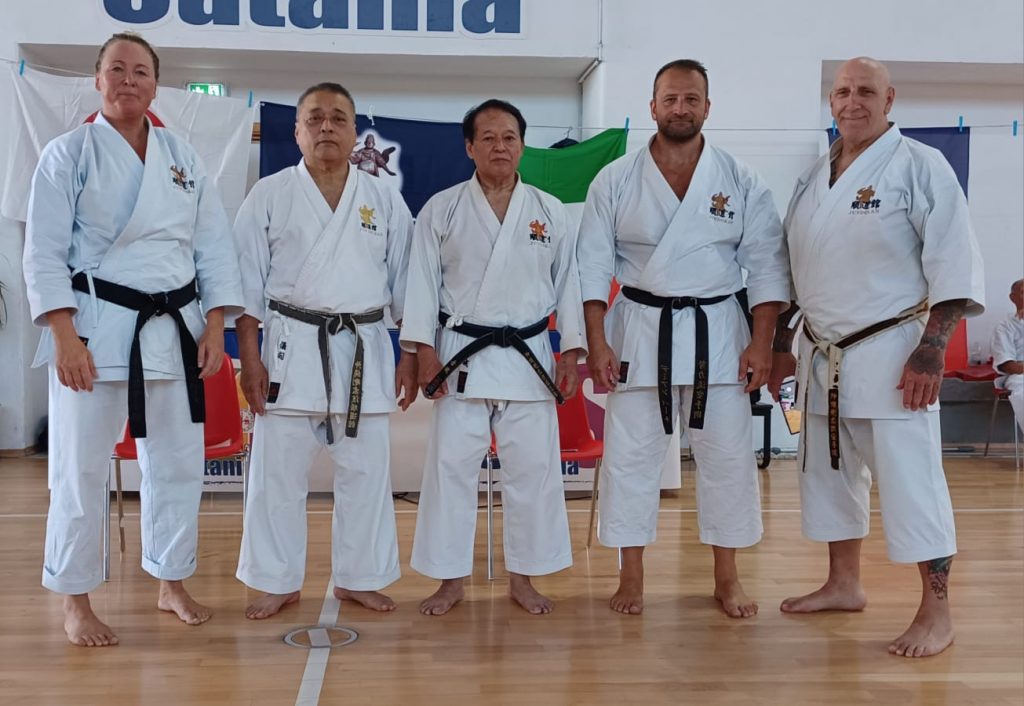
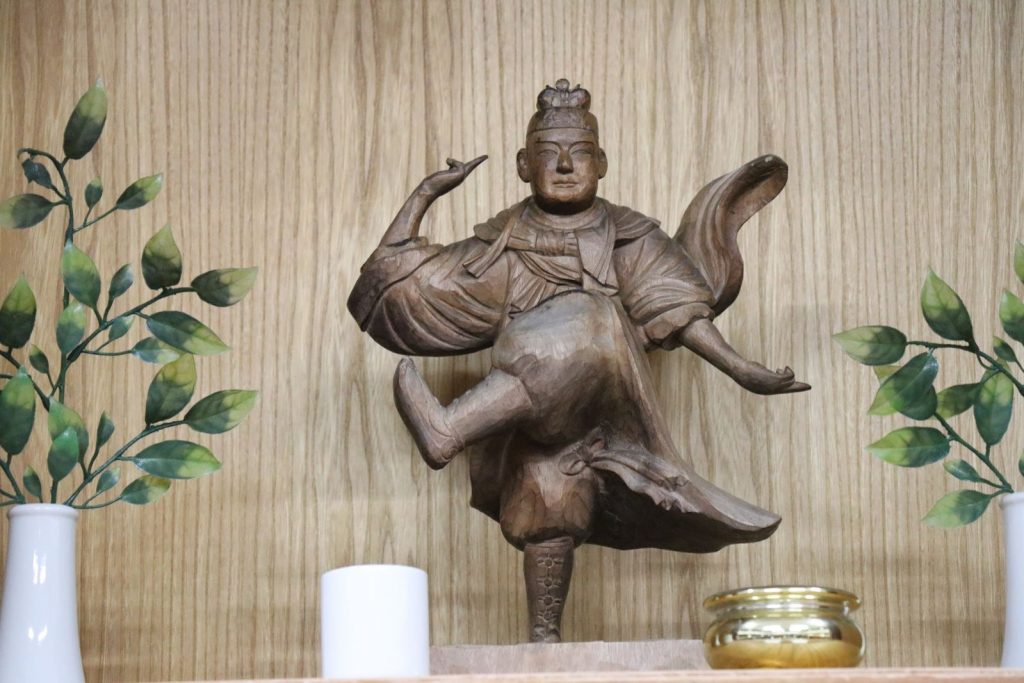

At our club, students receive comprehensive training in authentic Okinawan Goju Ryu Karate, a complete self-defence system encompassing vital point striking, locking, joint manipulation, gouging, throwing, takedowns, and anti-grappling techniques, alongside traditional striking, blocking, and kicking methods.
Classes are structured to cover four key areas of Karate: Exercise (Junbi Undo), Basic Technique (Kihon), Form (Kata), and Sparring (Kumite). Within this framework, students find a supportive and positive learning environment, promoting discipline and respect for others as fundamental values of Karate training.
Our Karate program caters to diverse needs, whether it's self-defence, fitness and weight loss, improved coordination, discipline, or personal growth. Whether you're a lifelong martial artist, a beginner taking the first steps, an intermediate practitioner, or an advanced student, Doryoku Ryu Karate welcomes and supports individuals at every stage of their journey.
KIHON - BASICS
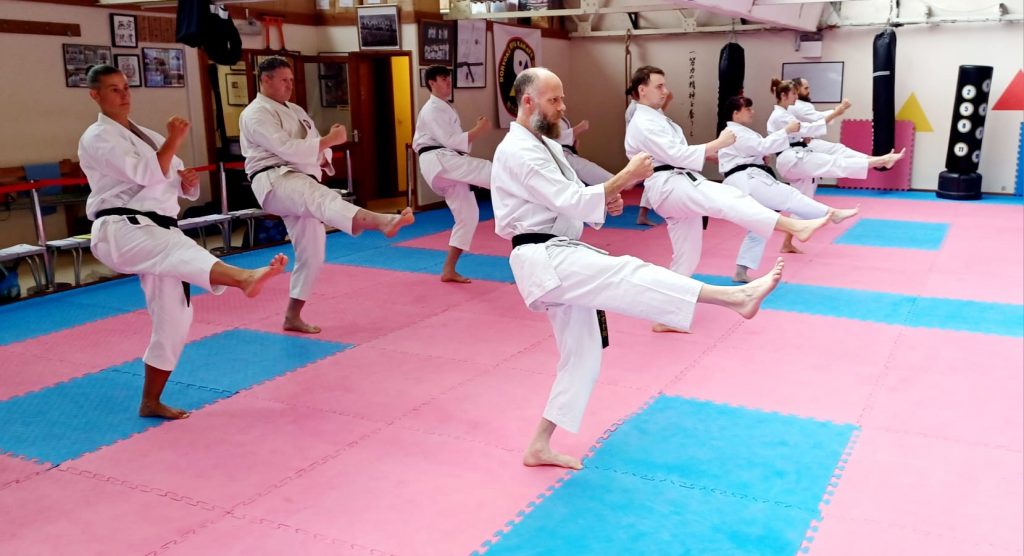

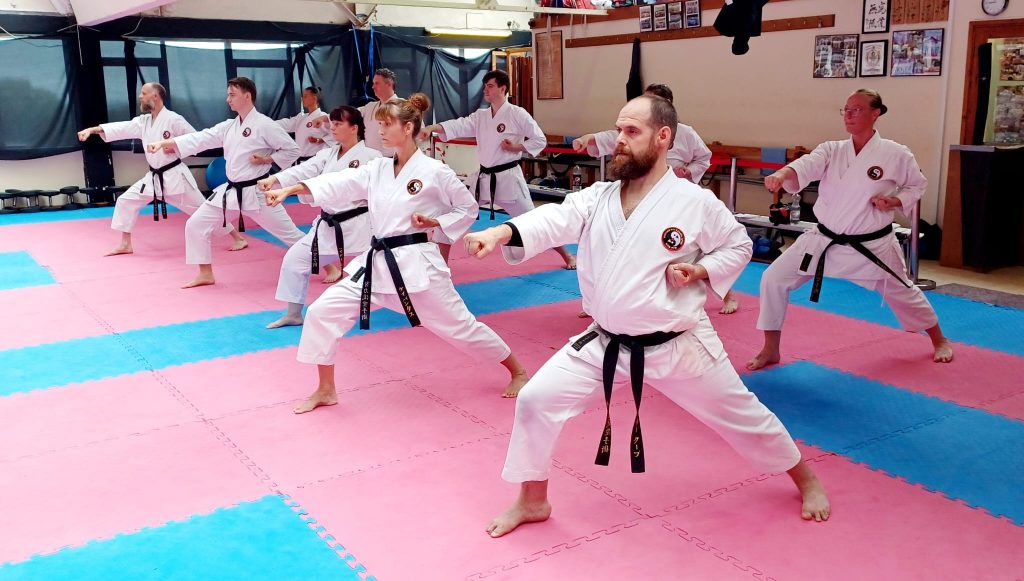
Kihon (basics) forms the bedrock of karate training. Building a strong foundation of basics is paramount to mastering karate techniques. In our basic training, we focus on striking, punching, blocking, kicking, and stances. We also practice combinations of these movements with practical self-defense or athletic applications.
At our dojo, we emphasise traditional kihon in lines to perfect techniques. This approach teaches body mechanics, body control, target recognition, and the use of suitable strikes. Power generation and training with pads are core aspects of our style. We believe that the most effective self-defense techniques often involve single, well-executed strikes
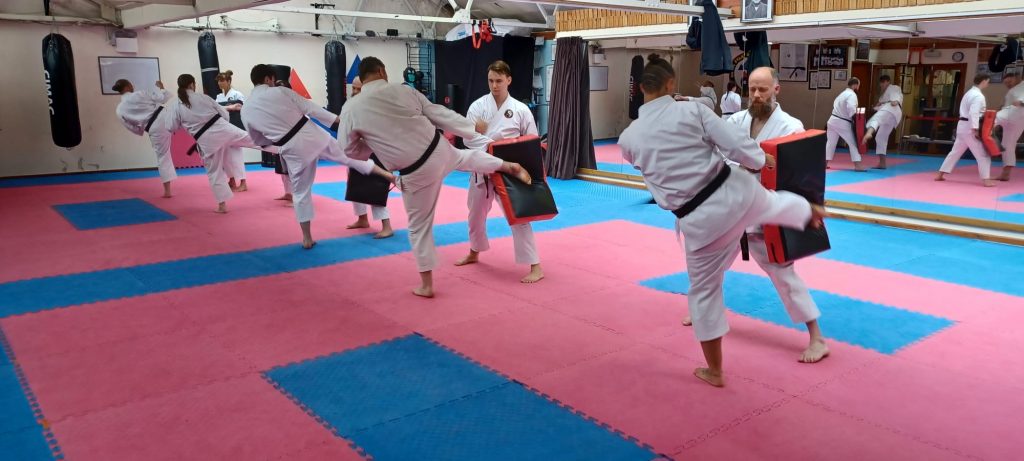


KATA - FORM
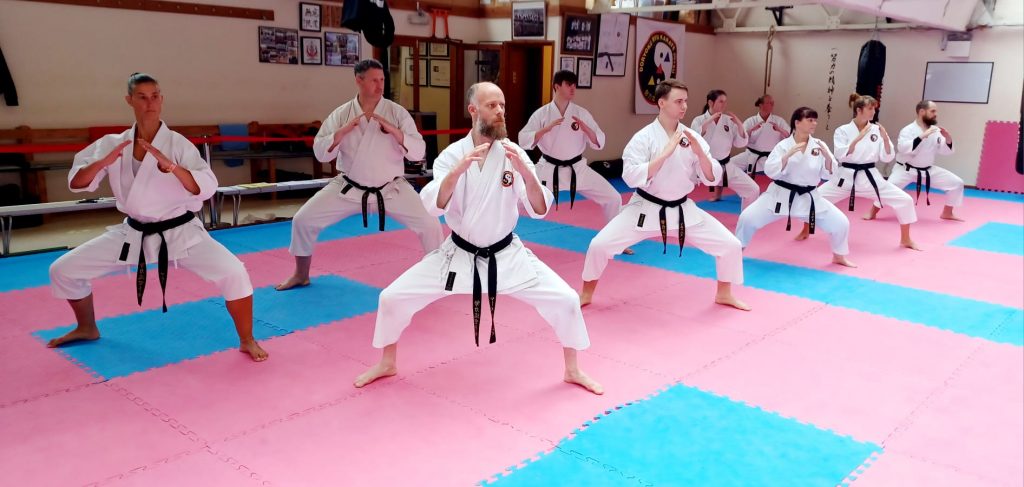
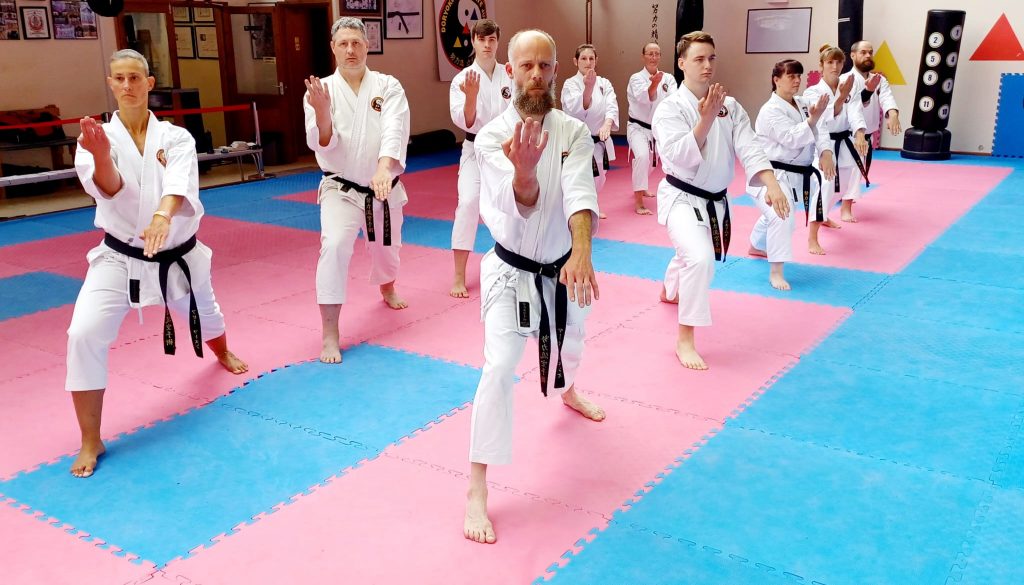
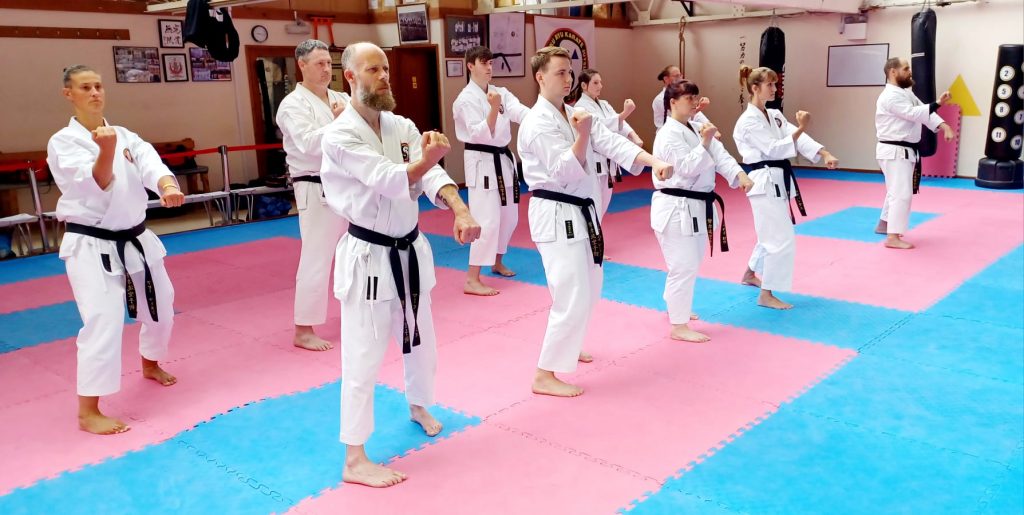
Kata (form) is a prearranged sequence of attacking and defensive movements that karate students learn.
Originally, karate kata served as a log or record of self-defence techniques. Today, kata serves various purposes. The most common use is for grading students, with students required to learn a particular kata for their next belt. Additionally, karate tournaments have gained popularity, allowing students to showcase their skills with points awarded for the best performance.
At our dojo, we place a strong emphasis on kata training and performance, but we also focus on the practical application of kata, known as 'bunkai' or 'oyo.' This involves studying how specific moves can be used in self-defence situations. Our students learn how to apply their kata techniques effectively against realistic types of attacks commonly encountered in Western society today. Kata training incorporates nerve/vital point strikes, gouging, joint-locking, throwing, manipulation, and ground grappling or anti-grappling techniques.
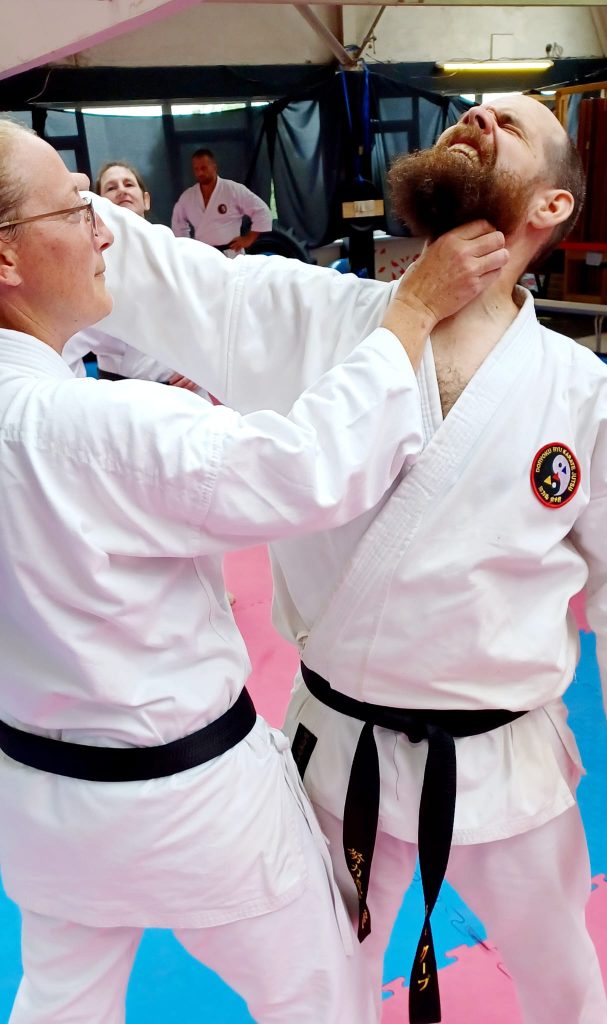
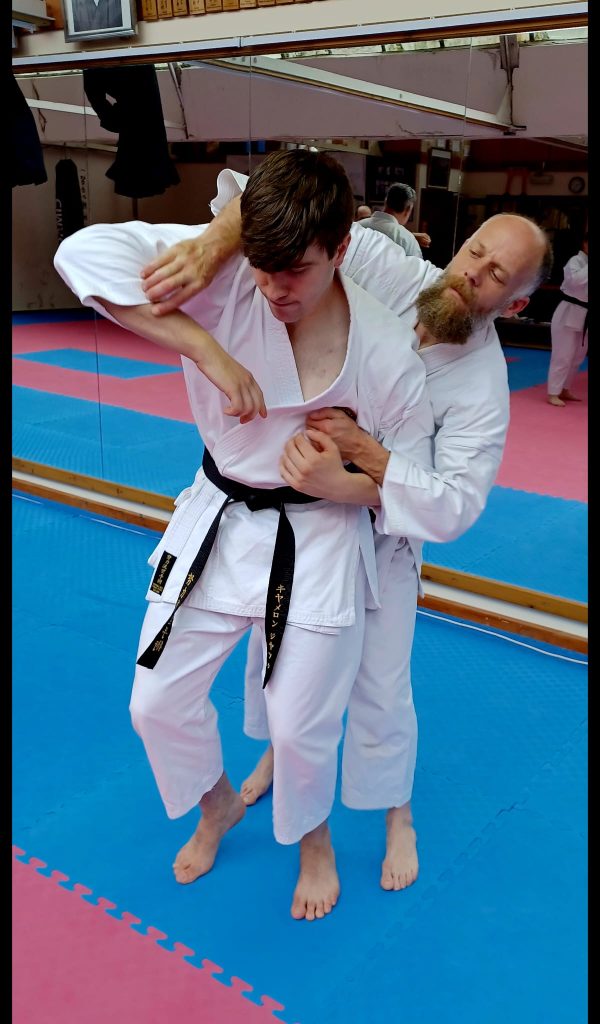
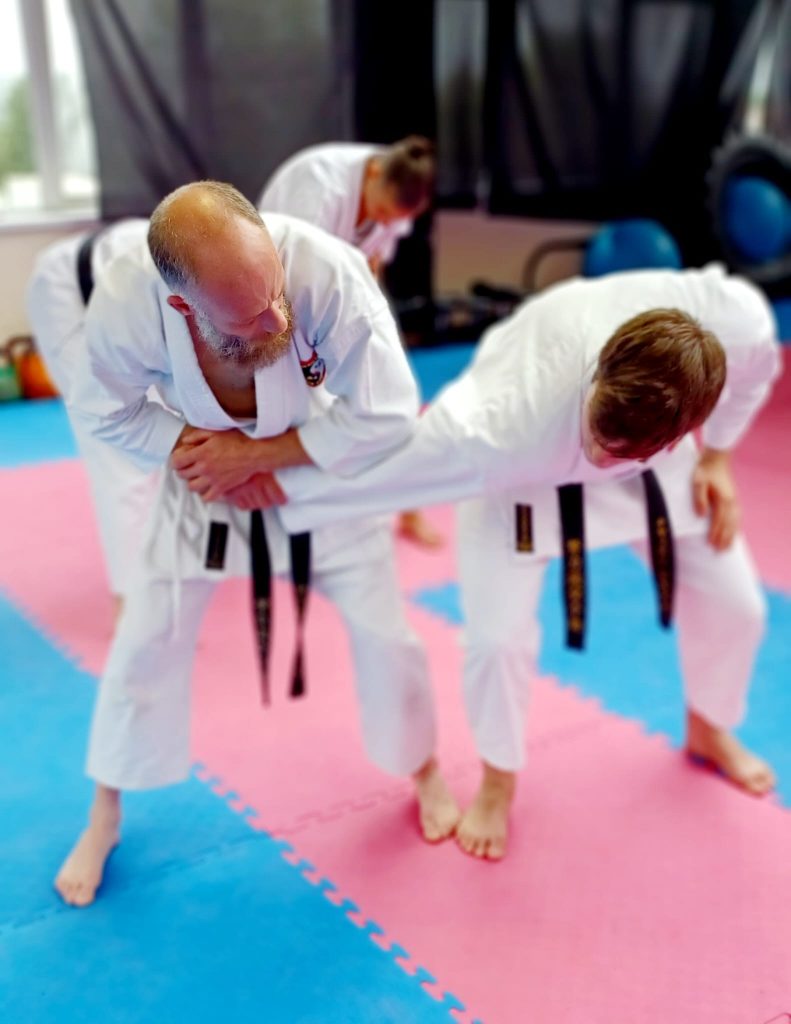
KUMITE - SPARRING
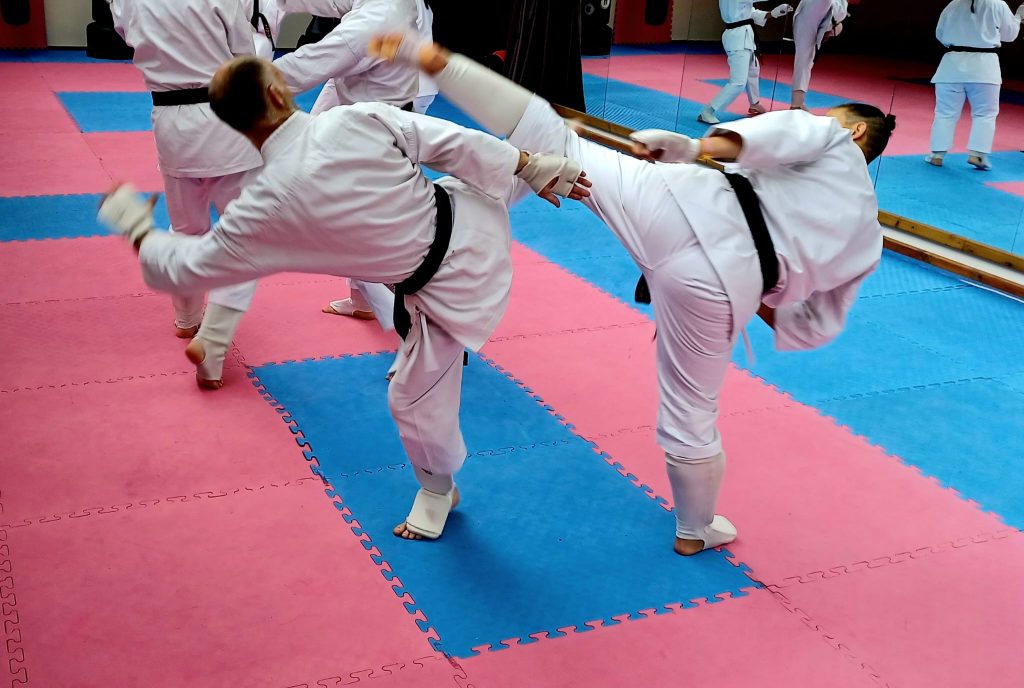
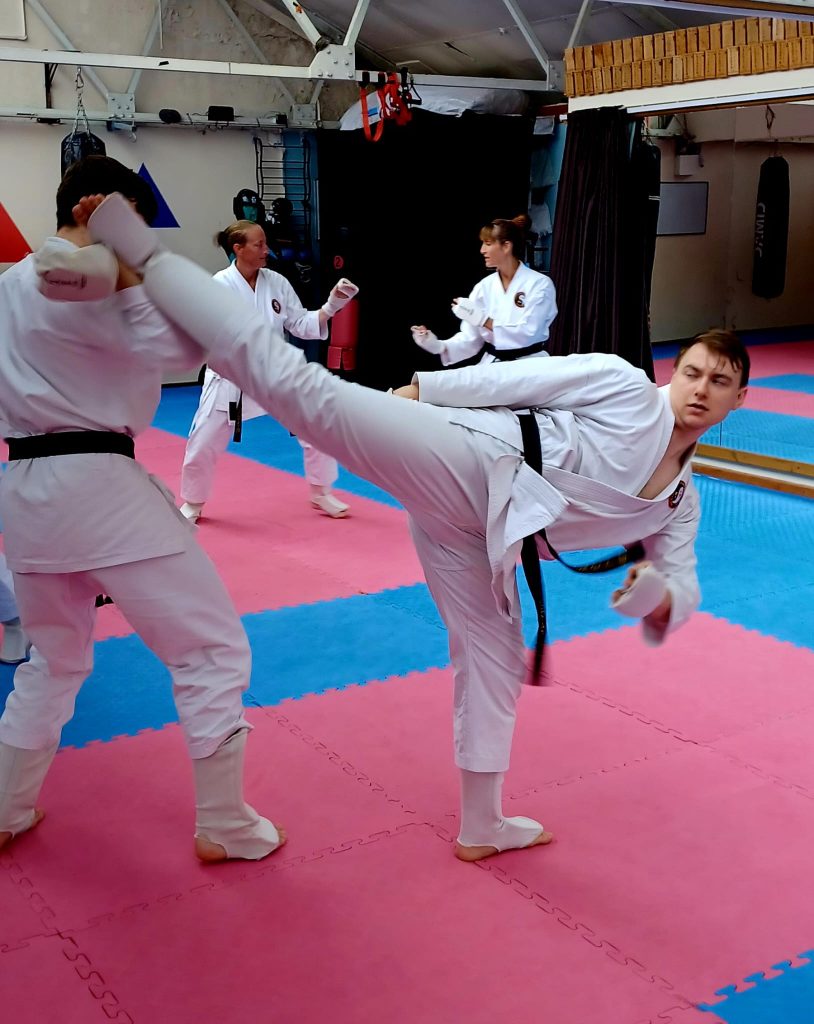
Kumite (sparring) provides our students with the opportunity to practice basic punches, blocks, and kicks in a competitive environment against an opponent. It plays a crucial role in helping students develop their range, timing, and control. Kumite is governed by safety-oriented rules to ensure a secure training environment. However, it is essential to recognise that the true essence of self-defence in karate lies within kata, not kumite.
Understanding what kumite entails and what it does not is important. As it operates within certain rules, its effectiveness is somewhat limited. Nevertheless, students can apply their sparring/kumite skills in various tournaments. At our club, we actively participate in Club and Association tournaments held across the country. Initially, most of our kumite practice is non-contact, prioritising safety and inclusivity.
As students progress in fitness and skill, they may choose to engage in semi-contact and randori-free fighting if they wish to further challenge themselves in a controlled setting.
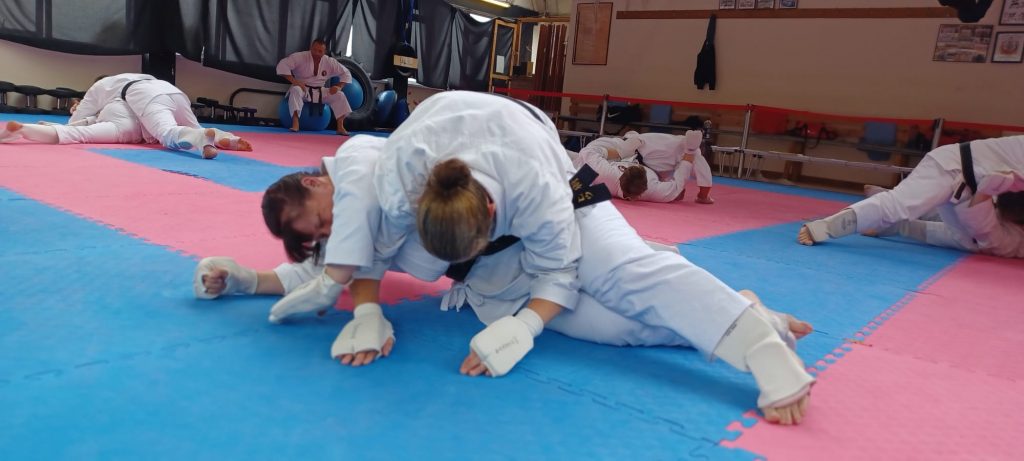
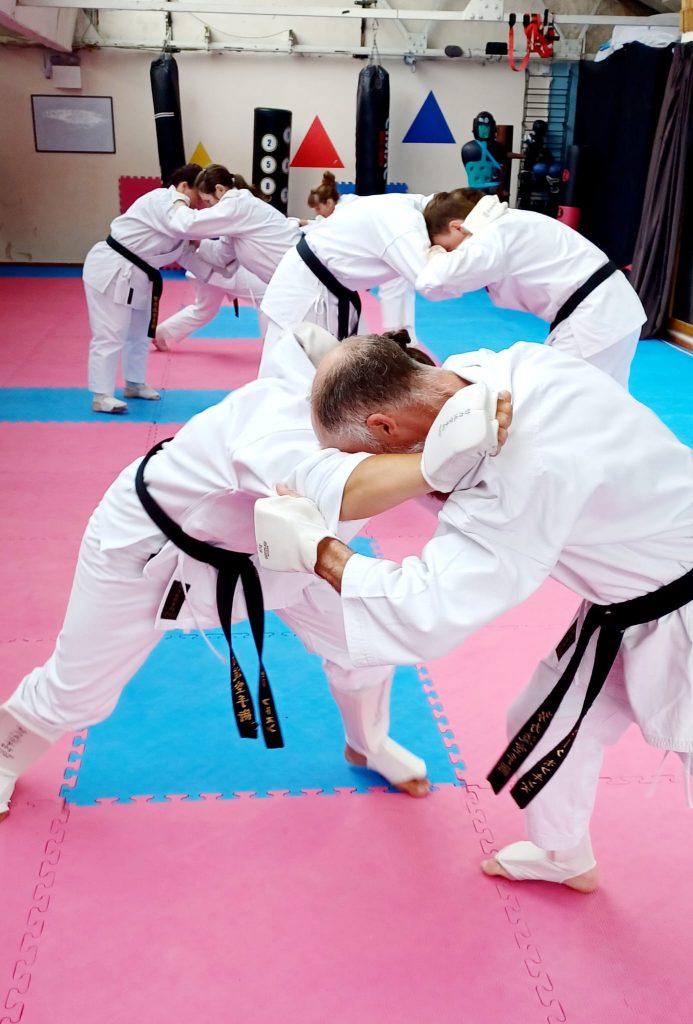
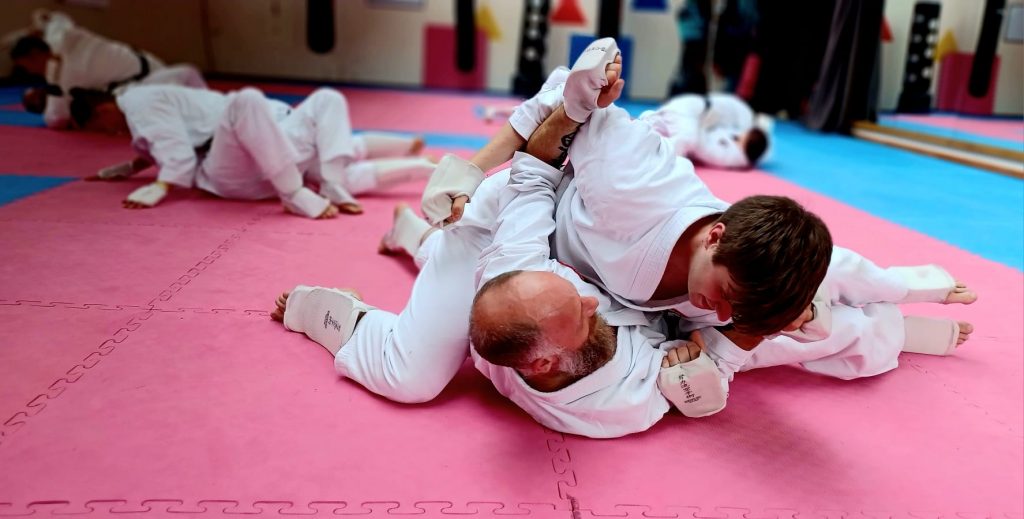
JUNBI UNDO-PREPARATORY EXERCISE
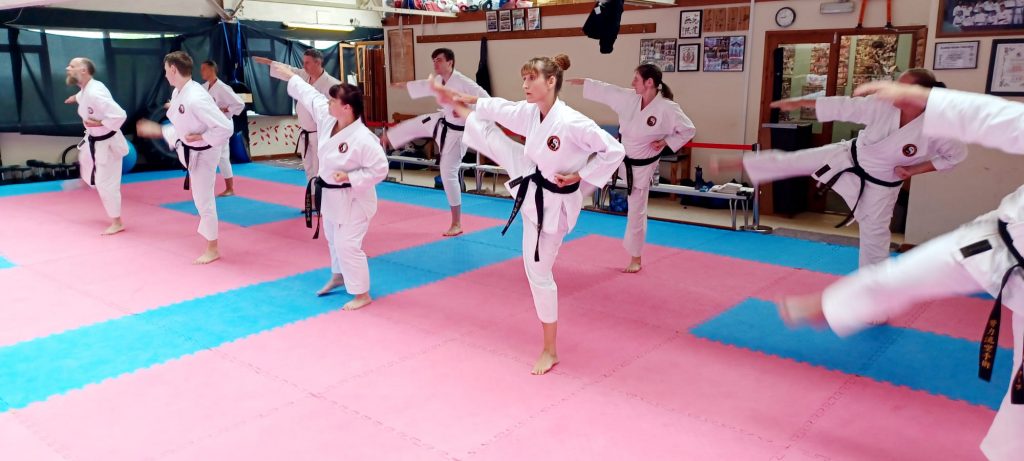

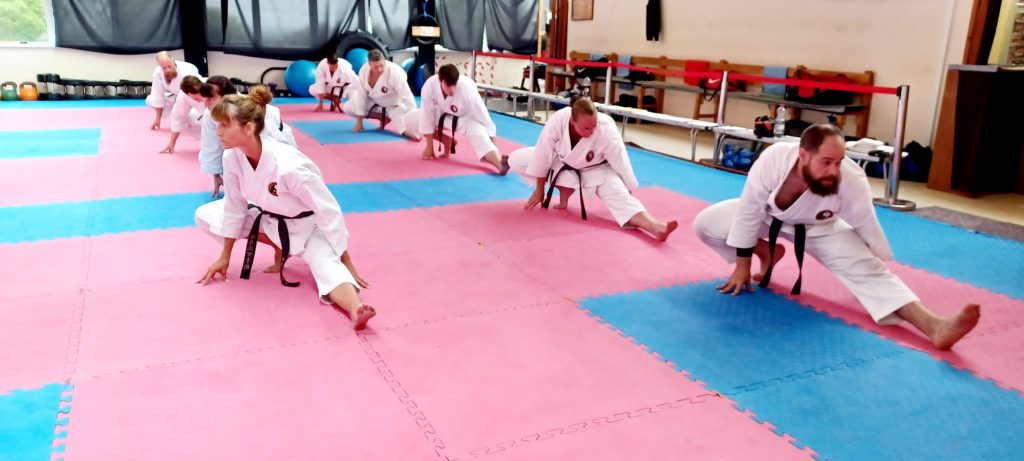
“just a little bit of junbi undo”
Junbi Undo is an essential aspect of Goju Ryu. These exercises have been passed down since the time of Chojun Miyagi, the founder of the tradition. Junbi Undo serves a dual purpose—it not only prepares the body for training by warming up the muscles but also targets the specific muscles and tendons used in various karate techniques. These exercises aid in focusing the mind on different parts of the body, facilitating an early appreciation of postures and sensations essential for mastering karate techniques.
Junbi Undo includes two primary types of exercises. The first type focuses on stretching the muscles and tendons while improving joint flexibility. This promotes suppleness and enhances the body's range of motion, crucial for fluid movements during training. These exercises also elevate the body's temperature and stimulate blood circulation. The second group of exercises is designed to develop strength and endurance in the major muscle groups, both physically and mentally.
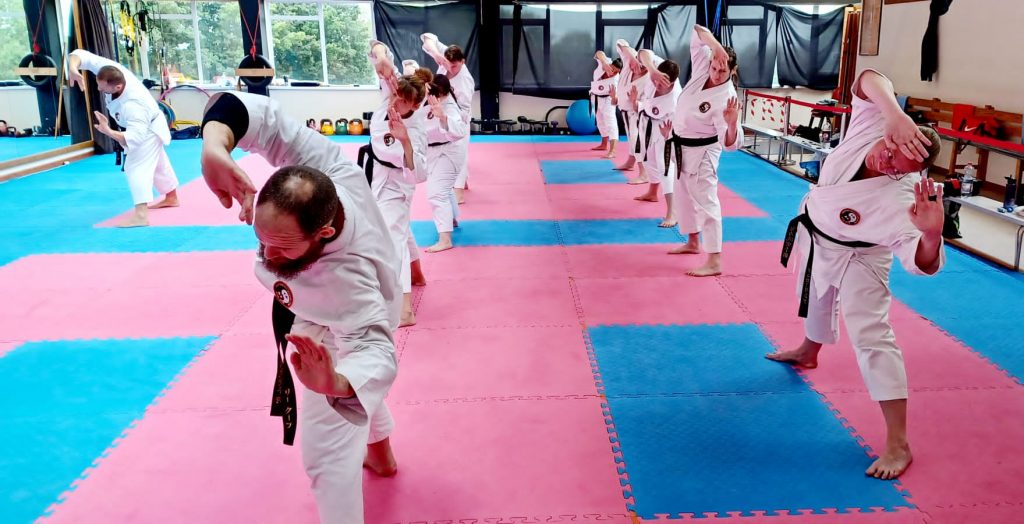
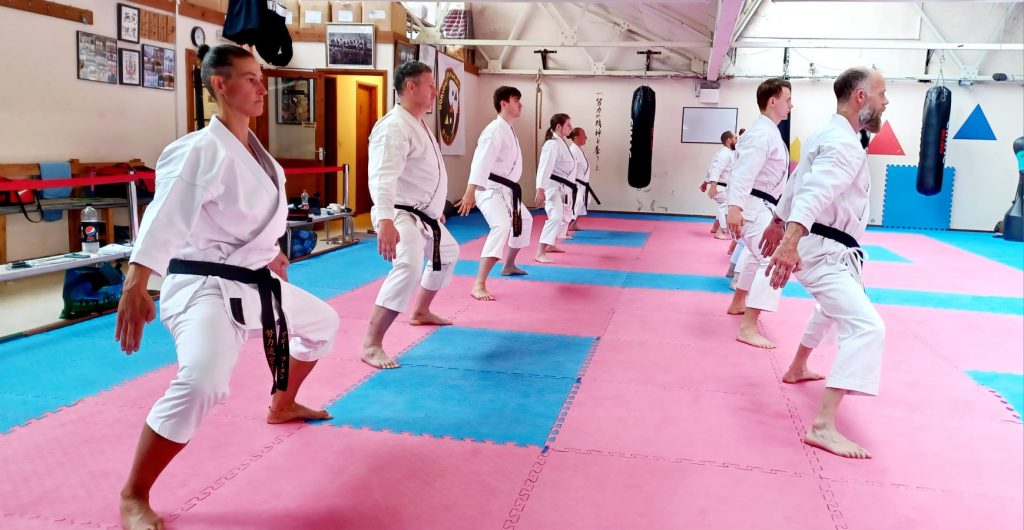
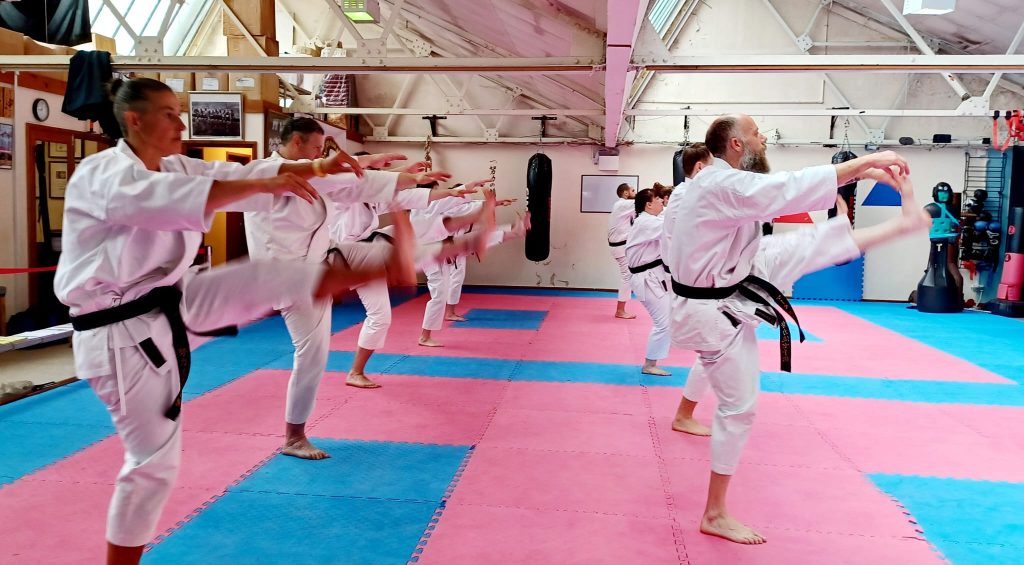
When training in Karate we are trying to achieve a stronger, fitter, more flexible body. In self-defence being fitter and stronger is a real advantage.
